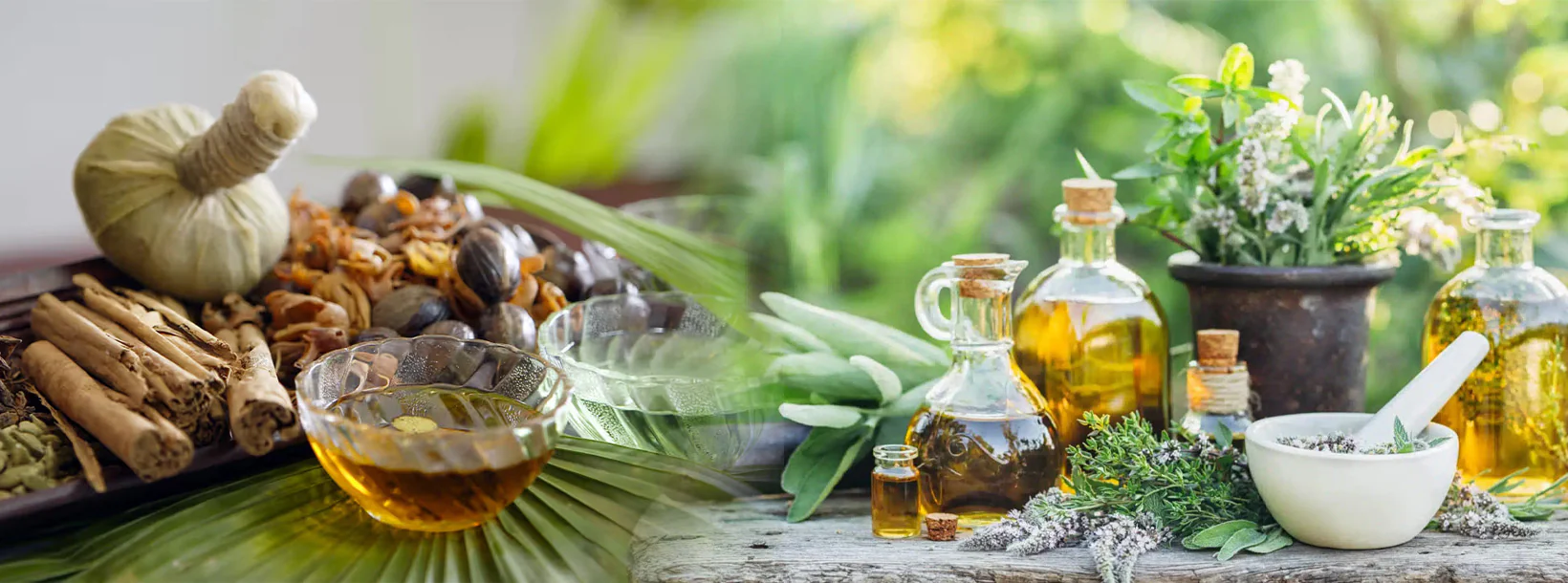
Ayurvedic Medicinal Plants of Sri Lanka
Sri Lanka's Ayurvedic tradition features a rich variety of medicinal plants used for centuries. Sri Lanka has a rich tradition of Ayurvedic medicine, drawing on its indigenous knowledge and a variety of medicinal plants. Here are some notable Ayurvedic medicinal plants found in Sri Lanka:
Butea monosperma
Butea monosperma, commonly known as the flame of the forest or dhak, is a deciduous tree belonging to the Fabaceae family. It is native to tropical and subtropical regions of the Indian subcontinent and Southeast Asia.
Description
- Growth Habit: A medium-sized tree, typically reaching heights of 10-15 meters.
- Bark: The tree has a thick, rough bark that is brown to gray in color.
- Leaves: The leaves are trifoliate, with each leaflet being oval-shaped and dark green.
- Flowers: Known for its striking orange-red flowers, which bloom in large clusters and attract pollinators.
- Fruit: Produces flat, elongated pods containing seeds, which mature over time.
Habitat
Butea monosperma thrives in dry, deciduous forests and can tolerate a variety of soil types. It prefers full sun and is often found in regions with a distinct dry season.
Uses
This tree is valued for several reasons:
- Cultural Significance: The flowers are often used in festivals and traditional ceremonies.
- Medicinal Uses: Various parts of the plant are used in traditional medicine for their therapeutic properties.
- Timber: The wood is used for making furniture and tools.
- Fodder: Leaves and pods are used as fodder for livestock.
Cultivation
Butea monosperma is easy to cultivate from seeds. It grows best in well-drained soil and requires minimal care once established.
-

Ankenda
Acronychia pedunculata -

Beli
Aegle marmelos -

Bakmi
Nauclea orientalis -

Bangwel-geta
Coscinium fenestratum -

Bukinda /Walkinda
Tinospora malabarica -

Bu- kobbe
Allophylus cobbe -

Dodan –kaha
Memecylon capitellatum -

Diyamitta
Cissampelos pareira -

Embul dodan
Citrus aurantium -

Gas nidikumba
Biophytun reinward -

Hintambala
Carmona microphylla -

Goraka
Garcinia cambogia -

Karapincha
Murraya koenigii -

Keppetiya
Croton laccifer -

Kohomba
Azadirachta indica -

Kotikan-bevila
Sida alba -

Kudumiris (Forest paper)
Toddlia asiatica -

Kurundu
Cinnamomum zeylanicum -

Mahakaramba
Carissa carandas -

Muna mal
Mimusops elengi -

Nelli
Phyltanthus emblica -

Puwak
Areca catechu -

Rath mal
Ixora coccinea -

Eepatta / Ruk - anguna
Alangium salviifolium -

Siyambala
Tamarindus indica -

Walangasal / Wal-embilla
Embelia ribes -

Wal Karapincha
Micromelum ceylanicum -

Welangiriya
Paramignya monophylla
Ayurvedic and Herbal
-
 Promoção
PromoçãoSiddhalepa Ayurveda Herbal Balm
Preço normal De R$ 2,00 BRLPreço normalPreço unitário / porR$ 3,00 BRLPreço promocional De R$ 2,00 BRLPromoção -
Lakpura Wildcrafted Soursop (Guanabana, Graviola, Guyabano) Dehydrated Leaves Whole
Preço normal De R$ 12,00 BRLPreço normalPreço unitário / porR$ 14,00 BRLPreço promocional De R$ 12,00 BRLPromoção -
 Promoção
PromoçãoSethsuwa Pranajeewa Oil
Preço normal De R$ 20,00 BRLPreço normalPreço unitário / porR$ 24,00 BRLPreço promocional De R$ 20,00 BRLPromoção -
 Promoção
PromoçãoLink Swastha Thriphala
Preço normal De R$ 12,00 BRLPreço normalPreço unitário / porR$ 14,00 BRLPreço promocional De R$ 12,00 BRLPromoção

















































